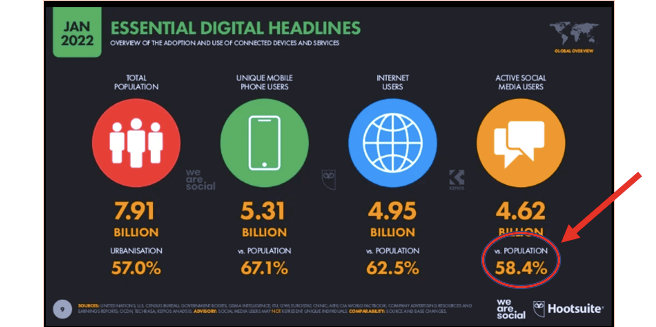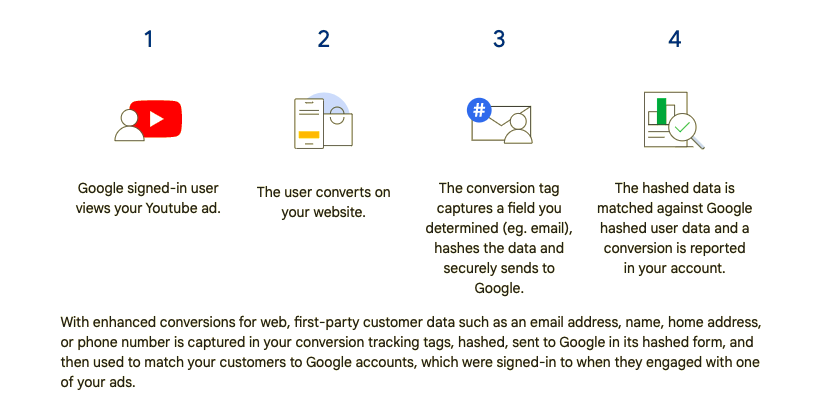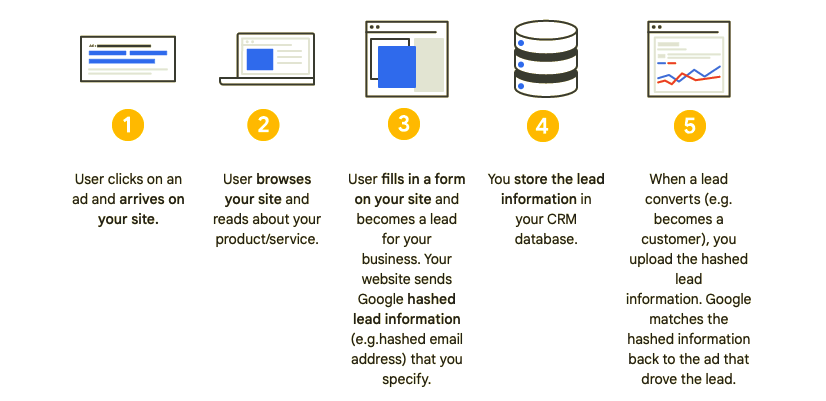Do you want to promote your business on social media? If so then you’re at the right place.
Here you will understand how does social media marketing work. What are its different types. Also, you will get to see some of the future aspects of social media marketing in detail.
Introduction
Social media is a popular term known by almost every individual on this planet. Nowadays, social media have penetrated so deeply into the lives of people that life seems impossible without it.
Channels such as Facebook, Instagram, and WhatsApp have become the first preference of people to spend their idle time.
One research reported that on average, people spend 2 hours 27 minutes daily on different social media platforms.
On social media, they find options to chat with people, exchange media files & documents, express feelings through emojis, follow people & brands, like & save interesting content, get motivation through fitness posts & campaigns, and stay updated with the latest news & trends and much more.
If we look at history, we will find that earlier people were using social media for entertainment purposes.
Gradually this trend was changed. Now, social media has become an inevitable virtual space where people and businesses are coming together and collaborating for mutual benefits.
Today businesses are actively taking their stores online and setting up their business accounts on different social media platforms.
To ease out their efforts, there are dedicated business tools and options available on each platform.
Brands can use them to market their products, connect with their target audience and sell products to people coming from different locations around the globe.
With the large user base and business profiles, social media has become a prominent space for economic activities.
If we go by the stats, you will be amazed to know that nearly 60% of the world population is available on different social media channels.

Facebook alone holds the majority of the market share with approx. 73% followed by Twitter which holds approx. 7%.
These two are popular social media channels. Apart from them, Instagram, Pinterest, YouTube, and Reddit are other social media platforms that are popular among the masses.
Here finds the visual that shows the real numbers.

Going through the numbers, we can see that there is a large base of people who are active on different social media platforms.
At any given time if we consider only one social media platform then also we will have a large audience to connect with.
Before we delve deep into the importance of social media for businesses, let’s first understand what is social media? And how does it relate to marketing?
What is Social Media?
Social Media is a word used for different digital platforms that facilitate networking in the online space.
These digital platforms include Facebook, Instagram, WhatsApp, Twitter, Snapchat, Pinterest, Reddit, and more. The list is very long so we are keeping it short here.
Acc. to Wikipedia, social media are the digital communication platforms that facilitate the creation and sharing of information, ideas, emotions, concepts, media files, and documents through virtual networks and communities.
Basically, social media platforms give access to the virtual space where people can interact with each other, exchange their ideas, share emotions, information, media files, documents, and much more.
Here there is no physical interaction occurs. However, everything is done in digital form. These platforms take a fraction of a second to connect you with your network and help you do communication faster than ever before.
Importance of social media for businesses
Just like social media channels work as the facilitator of networking between people, they also provide distinct channels of commerce to businesses and enable them to sell their products online.
Seeing the growing popularity of social media and a large user base, major brands have already started using social media platforms on a larger scale. They have set up their virtual storefronts there. Their products and services are put up with all the necessary details.
Other brands that have no presence on social media are also planning to set up their online shops across different social media platforms.
It is estimated that in a few years, almost every brand will run online and offline selling will become a secondary thing.
One study has revealed that business owners have great enthusiasm toward social media. They are very excited to take their operations online.
To attract brands, social media platforms are offering plenty of offers. For example: To ease out the task of shopping, there is the option of online payments to facilitate online transactions.
Not limited to this, there are plenty of tools available to aid promotional activities for brands and their products & services.
Brand managers can easily launch their marketing campaigns and target audience specific to their businesses. Targeting users has become a matter of a few clicks.
In addition, they can also see the detailed performance analysis on their campaigns such as click-through rate, no. of impressions, event conversions, total sales driven, associated revenue, and much more.
Today marketing has come to the reach of the common man. All thanks to social media. Now you don’t need to set aside a big marketing budget.
It is not wrong to say that social media platforms have brought a revolution into the commercial arena where businesses can carry out their promotions and sell their products & services easily.
By now we have discussed what is social media? and how does it crucial for businesses? Now let’s take a look at the concept of social media marketing.
What is Social Media Marketing?
Social media marketing can be defined as the promotional activities that are run to target prospects and users available on different social media platforms.
Here we need to know that marketing campaigns work only when the people are available. And this is where social media platforms come in. Each of the social media channels has its own audience.
If we integrate two or three channels together, then there becomes a huge audience base. This is exactly the situation seen in the case of Meta (earlier known as Facebook).
Firstly, you should know that company Meta owns Facebook, Instagram, and WhatsApp. Under this establishment, the user base of three platforms is provided to businesses at once.
With such a large audience base, the reach of any brand becomes more widespread.
Businesses can easily target people based on their demography including factors such as age, income, relationship status, family, and job type.
Apart from demographical factors, they can also target people based on their geographical factors, behavioral factors, and psychographic factors.
Social media marketing is now proven to be a game-changer for brands who have an adequate presence over any or some of the platforms.
Till here, you’ve understood the concept of social media and its relation to marketing. But what are its types?
Let’s have a look here……
Apart from the major platforms such as Facebook, Instagram, and Twitter, social media marketing exists in many other forms.
Here finds a list of different forms of the social media marketing that exist and help brands to reach the top.
Types of Social Media Marketing
- Paid Promotions / Sponsorship
- Content Marketing
- Influencer Marketing
- Following Base
- Paid Media
- Network & Community Management
- Forum Contribution
- Feedback & Reviews
Though big social platforms are a good place to start with marketing but going through other ways can give you more scope to grow your business.
Also, when you’re serious about deciding on the type of social media platform for your business, make sure to test the content that works best on each social media site.
Transformation of Social Media Marketing
The face of social media which was visible earlier has now been changed and looks very different.
For example, in the past users with good posts and outstanding content could easily grow their profiles on social media. At that time, the organic reach for the post was available.
But now, the case has been reversed. Even if you’ve got awesome content then also you can’t grow on social media. Because organic reach is now put to zero or negligible.
Today it is replaced with the paid reach. Here I mean that you need to promote your content every time you put up a new post to reach your audience and that’s what costs you money.
You will find that on social media, only promoted posts get the visibility in front of an audience and there is no scope left for organic posts to show up. This seems quite normal as in the end, these social media platforms are profit-making businesses.
Why would they provide anything for free if they can charge fees? I believe that by now you have understood the basics of social media marketing. Now we will see the future aspects of social media marketing.
Future Scope of Social Media Marketing
Social media marketing has blown the world with its tremendous growth. In fact, it is estimated to achieve much higher growth in 2022.
In recent years, we all have seen how social media has impacted trends, industries, and the market. The way it is growing, no doubt social media has a very bright future. But how it will tread to achieve that growth is something to keep an eye on.
It will be interesting to see, how social media would influence the market outlook? What all features will be offered to people and businesses in 2022?
To know the answers, we consulted many fields experts. Here are the points that experts have pointed out as future prospects for social media marketing in the discussion.
Social Listening
Better market and consumer insights from social media talks.
It seems simple when it comes to talking about social listening. What’s being said about you and your brand. How people are discussing the topics relevant to your business and industry?
When customers take their concerns, feedback, and compliments to social media platforms, they’re the real-time and actionable data. It gives you a chance to initiate a two-way dialogue with them.
By listening and responding to their queries, you establish a ground for your brand to connect with your customers. It helps you channel your marketing strategies into the deep market and consumer insights.
For example, a fashion jewellery brand listens to its audience and improvises its products to make them more appealing.
Subsequently, brand managers can keep a watch on the type of content that appeals more to the people. So that they can take timely action to optimize the content and put them on different social media platforms.
Doing social media research on this aspect can give you some highly valuable insights to consider. You should consider setting up some measures before adopting social media listening as part of marketing strategies.
In that way, with well-defined social media KPIs, you will be in a better position to calculate and report ROI anytime it is needed.
Video Content
Videos are the second important point that experts have talked about. With the entry of video apps such as TikTok, Snapchat, and Josh, the culture of short and micro-videos has become very popular and continues to rise among the youngsters.
Every day, new creators are coming in and setting up their own trends. These days, people are interested more in watching videos rather than consuming any static content including images and infographics.
Acc. to one study, video advertisement gets 7.5x higher CTR (click-through rate) than display ads. The reason is quite obvious. Videos are a great way to keep the audience engaged with your brand. They give you more room to interact with your prospects through dynamic content.
For marketers, it is important to understand the changing landscape of the internet and the taste of your target audience. This way you can easily build up your buyers’ persona.
With the proper video marketing strategies and availability of buyers’ persona, you can achieve your objectives and ensure the success of your video campaigns.
Influencer & Micro-Influencers
Over the past few years, Influencer marketing has become one of the most effective modes of digital marketing. Influencers are in huge demand.
Brands are always on the lookout for their potential partners to collaborate with.
With billions of people browsing social media platforms for inspiration, entertainment, knowledge, and networking, it comes no wonder that marketers are harnessing the popularity of the most recognizable faces for promotions.
One research has stated that the market value of global influencer marketing has reached a value of USD 13.8 Bn (as of 2021).
Among all the platforms, Instagram is setting up a leading stage for influencers to associate with brands and promote products & services. Other platforms that are majorly boarding influencers are YouTube and TikTok.
Earlier businesses trusted celebrities and sportspersons for their endorsements.
But when people started to take the authenticity of brands and products into consideration, brands turned to social media influencers. This was the onset of influencers in the world of social media.
With the high demand and overcrowding of start-ups & small businesses, influencers are getting over-expensive these days.
As a result, micro-influencers are turning up and replacing the influencers in their specific niches. They keep great influence over the specific audiences relevant to different industries.
Micro-influencers account for over 81% of the Instagram influencers and hold an active audience base of 15000 – 100,000 followers. But still, big brands don’t consider them relevant for their promotions and they get overlooked for no reason.
So far, influencer marketing has not reached its peak. By collaborating with the right set of partners, brands can easily capitalize upon their popularity and turn their businesses into profitable ventures.
Artificial Intelligence
Artificial Intelligence is another term used for machine learning. Big tech companies such as Google, Microsoft, and Facebook vouch greatly and use AI largely on their platforms.
You might have noticed one thing whenever you check out any product on social media, ads for that particular product show up in front of you every time you surf the internet or any available social media site.
So, what’s the reason that pushes such selective ads on screen? Let me explain to you. Every social media platform has a distinct algorithm that tracks the users and their surfing behaviour.
Let’s say, you check out the men’s casual shoes on any website. Next time whenever you go online, you will see ads for that specific shoes right on your screen. So here your online behaviour has been tracked based on which you are served the most relevant ads.
It is considered in marketing that serving the right information to the right people at the right time is the most effective approach to influence people and push them to take desired actions.
That’s what exactly has been done with you by serving ads based on your online behaviour. Perhaps in the near time, there will be no strange, if you see machines replacing the human workforce and managing some critical tasks. All credit goes to Artificial Intelligence.
Especially in the context of social media, this feature will definitely prove to be a game-changer in near future. AI-powered chatbots are great examples of AI on social media platforms.
Summary
Social media is a rapidly changing technology that has evidently proven its worth over time. For brands, it has become more important than ever to embrace social media marketing as a part of their marketing strategies.
If you have any queries or any suggestions regarding social media marketing and any point discussed above, feel free to share them with us in the comment section below. We will be happy to take your comments.





